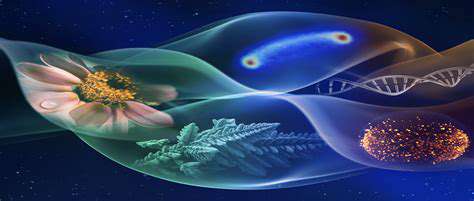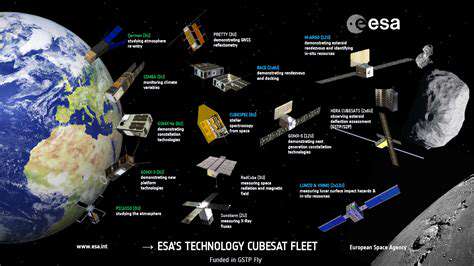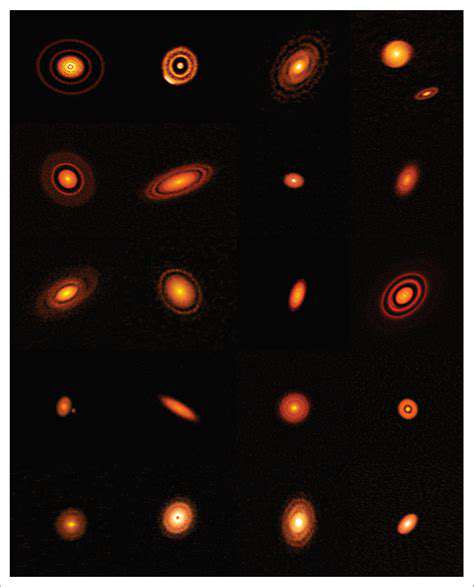Primordial Earth's Chemical Laboratory
Our planet's infancy resembled a vast chemical experiment, with volcanic fury and atmospheric turbulence creating a reactive environment. These extreme conditions paradoxically may have fostered the molecular complexity necessary for life's emergence, providing both raw materials and energy sources for prebiotic synthesis.
Water's Dual Role in Chemical Evolution
Liquid water served as both solvent and reactant in Earth's early chemistry. Its unique properties facilitated molecular interactions while protecting fragile compounds from destructive radiation. Hydrothermal vent systems may have provided ideal microenvironments for concentrating and organizing organic molecules.
Molecular Complexity Emergence
Simple atmospheric gases gradually transformed into biologically relevant molecules through various energy inputs. This chemical evolution progressed from basic compounds to increasingly complex structures capable of information storage and metabolic functions. Laboratory experiments demonstrate how easily such transitions can occur under plausible early Earth conditions.
Reaction Accelerators in Primordial Chemistry
Certain mineral surfaces and metal ions dramatically enhanced key chemical reactions without being consumed. These natural catalysts acted as molecular matchmakers, facilitating unions between reactive compounds. Their presence significantly increased the probability of forming biologically relevant polymers.
Polymer Formation Pathways
The leap from monomers to polymers represents a critical threshold in chemical evolution. Various environmental scenarios - including wet-dry cycles and mineral-mediated polymerization - could have driven this crucial transition. These processes gradually built the molecular complexity necessary for primitive biological functions.
Self-Replication's Chemical Origins
The emergence of molecular self-replication marked the transition from chemistry to biology. RNA-like molecules may have served dual roles as both information carriers and catalytic agents in this critical phase. Understanding this transition remains one of science's greatest challenges and opportunities.
Extraterrestrial Chemical Evolution
Prebiotic chemistry needn't be Earth-exclusive. Other worlds with liquid solvents (whether water or alternative media) may host analogous chemical evolution. Meteoritic evidence suggests that many life-essential compounds form readily throughout the cosmos, increasing the likelihood of parallel chemical pathways elsewhere.
Identifying Habitable Exoplanets
The Exoplanet Discovery Revolution
We've transitioned from speculating about other worlds to cataloging thousands of confirmed exoplanets. Advanced detection methods reveal planetary systems of astonishing diversity, challenging our assumptions about planetary formation and habitable conditions. Each discovery refines our understanding of life's potential cosmic distribution.
Space telescopes have become our interstellar scouts, identifying planetary candidates for closer examination. Their data reveals everything from super-Earths to hot Jupiters, with a tantalizing subset residing in their stars' temperate zones. This wealth of discoveries informs our search strategies and probability estimates.
Defining Habitability Parameters
The traditional habitable zone concept continues evolving as we discover extremophiles on Earth and unusual exoplanet environments. While liquid water remains a key criterion, we now consider tidal heating, atmospheric composition, and other factors that could expand habitable real estate. These refined parameters help prioritize the most promising exoplanets for detailed study.
Stellar characteristics profoundly influence planetary conditions, requiring customized habitability assessments for different star types. A planet orbiting a red dwarf faces different challenges than one circling a sun-like star, necessitating flexible definitions of potential habitability.
Atmospheric Forensics
Exoplanet atmospheric analysis represents the cutting edge of astrobiological research. By dissecting starlight filtered through alien atmospheres, we search for chemical imbalances that might indicate biological activity. This painstaking work requires separating planetary signals from stellar interference and instrumental noise.
Advanced spectroscopy acts as our cosmic chemical analyzer, identifying molecular fingerprints in exoplanet atmospheres. Certain gas combinations, like oxygen with reducing gases, could strongly suggest biological processes, though geological explanations must always be considered.
Biosignature Interpretation Frameworks
Earth's biosphere provides our primary reference for identifying potential biosignatures. However, we must remain open to alternative biochemistries that might produce different atmospheric signatures. This requires balancing Earth-centric assumptions with imaginative consideration of alien life possibilities.
Contextual factors - including planetary age, stellar activity, and geological processes - prove crucial for accurate biosignature interpretation. A holistic approach that considers multiple lines of evidence offers the best hope for reliable conclusions.
Technology Enabling Discovery
Next-generation observatories will dramatically enhance our exoplanet characterization capabilities. Their unprecedented sensitivity and resolution promise to reveal atmospheric details previously beyond our reach. These technological leaps may finally answer whether we share the cosmos with other lifeforms.
Computational advances complement hardware improvements, allowing sophisticated modeling of exoplanet environments. These virtual laboratories help interpret observations and predict where life might most likely emerge under different conditions.
Future Directions in Exoplanet Science
The coming decades promise revolutionary advances in exoplanet studies, from direct imaging of Earth analogs to potential chemical evidence of biological activity. Ambitious mission concepts could eventually provide definitive answers to humanity's most profound questions about our cosmic solitude or companionship.
This ongoing exploration represents one of science's greatest adventures, blending cutting-edge technology with fundamental philosophical inquiry. Each discovery, whether confirming or contradicting our expectations, advances our understanding of life's cosmic context.
Solar System's Biological Potential
Mars: A World of Lost Potential
The Red Planet's ancient river valleys and mineral deposits tell a story of dramatic climate change. While its surface appears barren today, subsurface aquifers or protected microenvironments might harbor extremophile organisms. Current missions methodically search for chemical traces that could indicate past or present biological activity.
Mars' geological record preserves evidence of its watery past, offering potential clues about any life that might have emerged. The planet's transition from habitable to hostile serves as a cautionary tale about planetary habitability's fragility and resilience.
Europa's Hidden Ocean
Jupiter's icy moon conceals a global saltwater ocean beneath its frozen crust. Tidal flexing provides internal heating, while potential hydrothermal vents could supply chemical energy for life. Future missions aim to analyze plume material or eventually penetrate the ice to directly sample this alien sea.
The technical challenges of exploring Europa's ocean are formidable but not insurmountable. Robotic submersibles and advanced drilling technologies could one day reveal whether this distant ocean hosts its own unique ecosystem.
Enceladus: Saturn's Geyser Moon
This small moon's spectacular plumes provide direct access to its subsurface ocean's chemistry. The detected organic compounds and mineral grains suggest active hydrothermal systems - potential hotspots for microbial life. Sample return missions could revolutionize our understanding of extraterrestrial habitability.
Titan: An Alternative Biochemistry Laboratory
Saturn's largest moon presents an entirely different model for potential life, with methane replacing water as the solvent. Its complex organic chemistry and energy sources make Titan a fascinating test case for alternative biochemistries. Future missions might discover lifeforms fundamentally different from Earth's water-based organisms.
Biosignature Detection Strategies
Identifying potential life in our solar system requires sophisticated analytical techniques and careful interpretation. We must distinguish between biological and abiotic signatures while remaining open to unfamiliar life chemistries. This delicate balance between skepticism and imagination defines modern astrobiological research.
As we explore these diverse worlds, we continually refine our understanding of life's possible manifestations. Each mission provides new data that challenges or confirms our assumptions about life's requirements and signatures.










